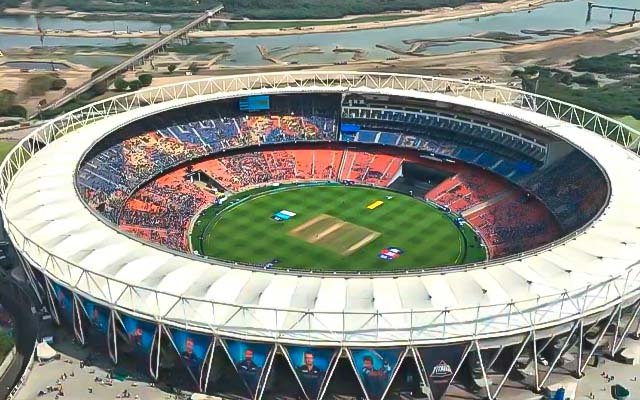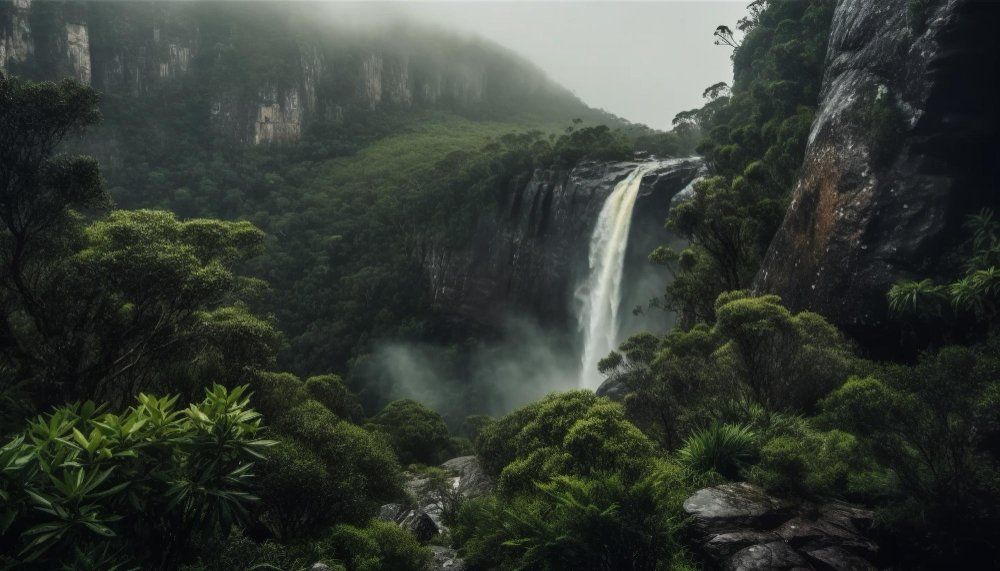ECOLOGY AND ENVIRONMENT
● Ecology is a science, in which study of
organism is undertaken in relation to
their environment. This science
developed in response to the increasing
awareness of inter- relationships
between plants, animals and their
physical habitats.
● The term ecosystem was first used by
AG Tansley in 1935, who defined
ecosystem as a particular category of
physical system, consisting of organisms
and inorganic components in a relatively
stable equilibrium which is open and of
various sizes and kinds.
Components of Ecosystem
● Abiotic Components are the non-living
components, e.g. air, water, soil,
suspended particulate matter etc.
● Biotic Components includes plants,
animals and micro-organism.
● The living organism in an ecosystem
can be divided into three categories
Producers
● Producers are organisms that can make
organic energy resources from abiotic
components of the environment. They
produce their food themselves.
Consumers
● Consumers are those organisms that
gather energy by consuming organic
material from other organisms. Primary
consumers are those organisms, who
consume mainly producers. Primary
consumers are also known as Herbivores.
● Secondary consumers are those
organisms, who consume mainly
primary consumers. Tertiary consumers
are organisms that consume secondary
consumers. Tertiary consumers are
carnivores. Omnivores feed on both
producers and other consumers.
● Detritovores consume detritus
(dead material of plants and animals).
Decomposers
● Decomposers are organisms that break
down dead or decaying organisms.
Decomposers are heterotrophic which
means that they use organic substrates to
get their energy and carbon and
nutrients for their growth and
development e.g. bacteria and fungi.
Functions of Ecosystem
The main functions of an ecosystem are as
follows:
(i) Materials or nutrient cycle
(ii) Biological or ecological regulation
● Foodchain The flow of energy from of
one organism to another in a sequence of
food transfer is known as a foodchain. A
simple foodchain is like the following
Grass→ Insect→ Frogs→ Snake→ Hawk
● Food Web A network of foodchains or
feeding relationships, by which energy and
nutrients are passed on from one specie of
living organism to another is called food
web.
● Trophic Levels Trophic levels are the
feeding position in a foodchain such as
primary producers, herbivore, primary
carnivore etc. Generally, green plants
form the first trophic level, the
producers, herbivores form the second
trophic level, while carnivores and
omnivores form the third and even the
fourth trophic levels.
● Ecological Pyramid An ecological
pyramid is a graphical representation
designed to show the number of
organisms, energy relationships and
biomass of an ecosystem. They are also
called Eltonian Pyramids after Charles
Elton, who developed the concept of
ecological pyramids. Producer organisms
(usually green plants) from the base of
the pyramid, with succeeding levels
above representing the different tropic
levels.
● Succeeding levels in the pyramid
represent the dependence of the
organisms at a given level on the
organisms at lower level.
● Pyramid of Biomass Biomass is
renewable organic (living) material. A
pyramid of biomass is a representation of
the amount of energy contained in
biomass at different trophic levels for a
particular time.
● It is measured in grams per meter or
calories per meter. This demonstrates the
amount of matter lost between trophic
levels.
● Pyramid of Energy The pyramid of
energy represents the total amount of
energy consumed at each trophic level.
POLLUTION
Environmental pollution is the effect of
undesirable changes in our surroundings
that have harmful effects on plants, animals
and human beings.
Pollutants Pollutants are substances which
cause pollution. They could be in any from
solid, liquid or gaseous.
● A primary pollutant is substance emitted
directly from a source.
● A secondary pollution is not directly
emitted as such, but forms, when other
pollutants (primary pollutants) react in
the atmosphere.
Primary pollutants
● Sulphur dioxide (SO )2
, nitrogen oxides
(NO )2
, carbon monoxide (CO), chloro-
fluoro carbons (CFCs), carbon dioxide
(CO )2
, Suspended Particulate Matter
(SPM) and Ammonia (NH )3
volatile
organic compounds, toxic metals etc.
Secondary pollutants
1. Particulate matter formed from
gaseous primary pollutants and
compounds in photochemical smog,
such as nitrogen dioxide.
2. Ground level ozone (O )3
formed from
N2
and Volatile Organic Compounds
(VOCs).
3. Peroxyacety l Nitrate (PAN) similarly
formed from NO2
and VOCs.
Air Pollution
It is the contamination of air by a variety of
substances causing health problems and
damaging our environment.
Air Pollutants
Some of the most common air pollutants are
as follows.
● Carbon Monoxide (CO) is produced from
incomplete combustion of fuel such as
natural gas, coal and wood.
● It is also produced in tobacco smoke. It
slows our reflexes and makes us feel
sleepy.
● Carbon Dioxide ( ) CO2
is the principal
greenhouse gas and is primarily
responsible for the greenhouse effect. It
can be formed from all types of common
human activities, such as burning fuels
and even breathing.
● Chlorofluorocarbons (CFCs) were
generally used in great quantities in
industry, for refrigeration and
air-conditioning and in consumer
products.
● Ozone ( )O3
gas occurs naturally in the
upper atmosphere where it shields the
Earth from the Sun’s dangerous
ultraviolet rays. When found at ground
level, it’s a pollutant.
● Nitrogen Oxide and Sulphur Dioxide
are major contributors to smog and acid
rain. These gases both react with
volatile organic compounds to form
smog, which can cause respiratory
problems in humans. Acid rain can
harm vegetation, change the chemistry
of river and lake water by lowering the
pH which is harmful to animal life and
react with the marble statues and
buildings to decompose them.
Controls/Measures of Air
Pollution
● Suitable fuel selection
● Modification in industrial processes
● Correct selection of manufacturing sites
● More efficient engines
● Awareness for using public transport so
that air pollution is minimised
Water Pollution
● It is the contamination of water bodies
(e.g. lakes, rivers, oceans, aquifers and
groundwater). Water pollution occurs
when pollutants are discharged directly
or indirectly into water bodies without
adequate treatment to remove harmful
compounds.
● Biological Oxygen Demond (BOD) It
is a measurement of amount of
dissolved oxygen that is used by aerobic
micro-organisms when decomposing
organic matter in water. It is an
important water quality parameter and
is an indicator of organic pollution.
Control/Measures of Water
Pollution
● Mass social awareness should be
generated.
● Ground water pollution can be
eliminated by maintaining strict
restrictions regarding waste disposal.
● Industrial effluents should be effectively
recycled, before releasing in water.
● Biodiversity is often seen in the terms of
three fundamental and hierarchically
related levels of biological organisation.
● Genetic diversity represents the
heritable variation within and between
population of organisms.
● Species diversity refers to number of
species in a site or habitat.
● Ecosystem diversity refers to diversity
of different organisms at the ecosystem,
habitat or community level.
Biodiversity Hotspots
● A biodiversity hotspot is a bio-geographic
region with a significant reservoir of
biodiversity that is under threat from
humans. The concept of biodiversity
hotspots was given by Norman Myers.
● To qualify as a biodiversity hotspot a
region must meet two strict criterias. It
must contain at least 0.5% or 1500
species of vascular plants as endemics
and it has to have lost at least 70% of its
primary vegetation. India has two
biodiversity hotspots—Western Ghats
and Eastern Himalayas. Indo-Burma
Region and Sundaland (including
Nicobar group of Islands).
Biodiversity Conservation
Conservation is planned management of
natural resources to retain the balance in
nature and retain the diversity. It
emphasises on the wise use of natural
resources by accepting the idea of
sustainable development. Conservation of
biodiversity is carried out in the following
ways.
Method of Conservation
The method of conservation of biodiversity
can be classified into two groups.
In-Situ (On Site)
Conservation include protection of plants
and animals within their natural habitats
or in protected areas. Protected areas are
land or sea dedicated to protect and
maintain biodiversity. Examples are
Biosphere Reserves, National Parks,
Wildlife Sanctuaries, etc.
Ex-Situ (Off Site)
Conservation of plants and animals outside
their natural habitats. These include
botanical gardens, zoos, gene banks of seed,
tissue culture and cryopreservation.
Threatened Species
Threatened species are any species
(including animals, plants, fungi, etc.)
which are vulnerable to endangering in the
near future. Species that are threatened
are sometimes characterised by the
population dynamics measure of critical
depensation, a mathematical measure of
biomass related to population growth rate.
This quantitative metric is one method of
evaluating the degree of danger.
IUCN
The International Union for Conservation
of Nature (IUCN) is the foremost authority
on threatened species, and treats
threatened species not as a single category,
but as a group of three categories,
depending on the degree to which they are
threatened :
● Vulnerable species : A vulnerable species
is one which has been categorised by the
International Union for Conservation of
Nature as likely to become endangered
unless the circumstances threating its
survival and reproduction improve.
● Endangered species : An endangered
species is a species which has been
categorised as indanger and is likely to
become extinct.
● Critically endangered species :
A critically endangered (CR) species is
one which has been categorised by the
International Union for Conservation of
Nature (IUCN) as facing a very high risk
of extinction in the wild. It is the highest
risk category assigned by the IUCN Red
List for wild species.
IUCN Red List
The IUCN Red List of Threatened Species
(also known as the IUCN Red List or Red
Data List), founded in 1964, is the world’s
most comprehensive inventory of the global
conservation status of biological species.
Climate Change
Climate change refers to long-term change
in the earth’s climate, especially a change
due to an increase in average atmospheric
temperature. In the past, Earth’s climate has
gone through warmer and cooler periods,
each lasting thousands of years.
Greenhouse Effect and Global
Warming
● The greenhouse gases (sometimes
abbreviated as GHG) in the atmosphere
absorbs and emits radiation within the
thermal infrared range. The process is the
fundamental cause of the greenhouse
effect. The primary greenhouse gases in
the Earth’s atmosphere are water vapour,
carbon dioxide, methane, nitrous oxide
and ozone. In the Solar System, the
atmosphere of Venus, Mars and Titan also
contain gases that cause greenhouse effects.
● Global Warming is the increase of Earth’s
average surface temperatue due to effect
of greenhouse gases, such as carbon
dioxide emissions from burning fossil fuels
or from deforestation.
Kyoto Protocol
● The Kyoto Protocol is a protocol to the
United Nations Framework Convention
on Climate Change (UNFCCC), aimed at
fighting global warming. The UNFCCC
is an international environmental
treaty with the goal of achieving the
‘‘stabilisation of greehouse gas
concentration in the atmosphere at a
level that would prevent dangerous
anthropogenic interference with the
climate system’’. The protocol was
initially adopted on 11th December,
1997 in Kyoto, Japan and entered into
force on 16th February, 2005. Second
commitment period of this protocol
started in 2013 and will end in 2020.
● The Intergovernmental Panel on
Climate Change (IPCC) has predicted
an average global rise in temperature of
1.4°C to 5.8°C between 1990 and 2100.
If successfully and completely imple-
mented, the Kyoto Protocol will reduce
that increase by somewhere between
0.02°C and 0.28°C by the year 2050.
Mission Included in Prime
Minister’s National Action Plan
for Climate Change (NAPCC)
● National solar mission
● National mission for enhanced energy
efficiency
● National mission on sustainable habitat
● National water mission
● National mission for sustaining the
Himalayan ecosystem
● National mission for Green India
● National mission for sustainable
agriculture
● National mission on strategic
knowledge for climate change
REDD ++
● Reducing Emissions from
Deforestation and Forest
Degradation (REDD) is an effort to
create a financial value for the
carbon stored in forests, offering
incentives to developing countries to
reduce emissions from forested lands
and invest in low carbon paths to
sustainable development.
● ‘REDD+’ goes beyond deforestation
and forest degradation and includes
the role of conservation, sustainable
management of forests and
enhancement of forest carbon
stocks.
● The proper implementation of
REDD+ will contribute to protection
of biodiversity, resilience of forest
ecosystems and poverty reduction.
Ozone Layer Depletion
● The ozone layer is located within the
Stratosphere, about 24 km above the Earth’s
surface.
● The layer consist of ozone gas molecules that
are formed as the sunlight reacts with oxygen.
● The ozone layer is very important as it
protects life on Earth by filtering the Sun’s
dangerous ultraviolet radiation.
● Due to increased pollution on Earth,
chemicals such as Chloro Fluro Carbons
(CFCs) are destroying this protective ozone
layer, which could lead to increased health
risks and damage agricultural and acquatic
ecosystem.
Montreal Protocol on Substances
that Deplete the Ozone Layer
● It is an international treaty designed to
protect the ozone layer from Chloro Fluoro
Carbons (CFCs).
● The treaty was opened for signature on 16th
September, 1987 and entered into force on
1st January, 1989, followed by a first meeting in May 1989













This is something New !